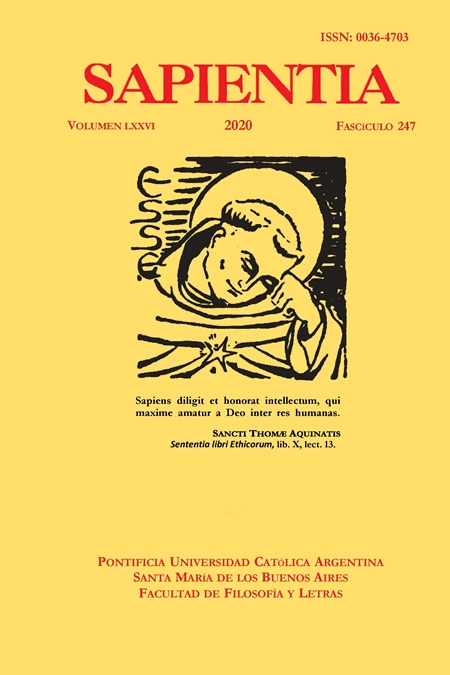Lust, Literature, and Damnation: Reading Dante's Divine Comedy
Palabras clave:
Augustine – Aeneas – Dante – Francesca – Paolo – VirgilResumen
Reading great works of literature is often a daunting task and this is especially the case with Dante's Divine Comedy, a vast encyclopedia of medieval culture. There are, as Kenelm Foster once noted, two Dantes: the poet who is the author of the text and Dante the pilgrim, whose journey through Hell, Purgatory, and Paradise constitutes the overarching theme of the poem. Readers of the poem are confronted from the very beginning with claims about the reality of what the poem describes. Charles Singleton, the great American Dante specialist, observed: "the fiction of the Divine Comedy is that it is not fiction." There are dangers in failing to take seriously what Dante describes, to read the poem with a "willing suspension of disbelief." In Canto 5 of the Inferno Dante encounters Francesca and Paolo in the circle of the lustful and he listens to the story Francesca tells about her and Paolo's getting lost in their own reading of the story of Lancelot and Guinevere. Dante the pilgrim, as described by the poet, is so beguiled by the story Francesca tells that he swoons in pity. The poet tells us the story of this encounter as part of the larger story of the poem as a whole. In way Canto 5 offers a commentary on the dangers of losing oneself in beautiful storiesDescargas
Descargas
Publicado
28-12-2021
Cómo citar
Carroll, W. E. (2021). Lust, Literature, and Damnation: Reading Dante’s Divine Comedy. Sapientia, 76(247), 7–26. Recuperado a partir de https://e-revistas.uca.edu.ar/index.php/SAP/article/view/3894
Número
Sección
Artículos
Licencia






